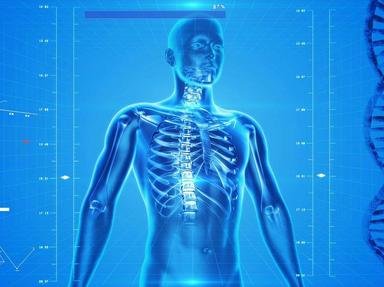Quiz Answer Key and Fun Facts
1. The specimen collected in the tube is cerebrospinal fluid. This fluid is found between which two layers of the meninges?
2. The two parts of the brain shown in the image, Broca's area and Wernicke's area, are involved in which of the following functions?
3. Which of the following does not form a part of the wall between both nostrils, the nasal septum?
4. In the image, you can see circular muscle fibres around the mouth which very often used by those who play the trumpet. What is the name of these muscles?
5. Looking at the picture, which of the following pairs of ribs would be referred to as false ribs?
6. From the picture that depicts the electrical conduction system of the heart, which of the following is considered as the heart's pacemaker?
7. The ampulla of Vater is a structure formed by the common bile duct and which of the following structures?
8. In which of the following parts of the female reproductive system does fertilisation take place?
9. Which of the following bones is not found in the wrist?
10. Which of the following muscles does not form part of the hamstrings?
Source: Author
Saleo
This quiz was reviewed by FunTrivia editor
rossian before going online.
Any errors found in FunTrivia content are routinely corrected through our feedback system.

